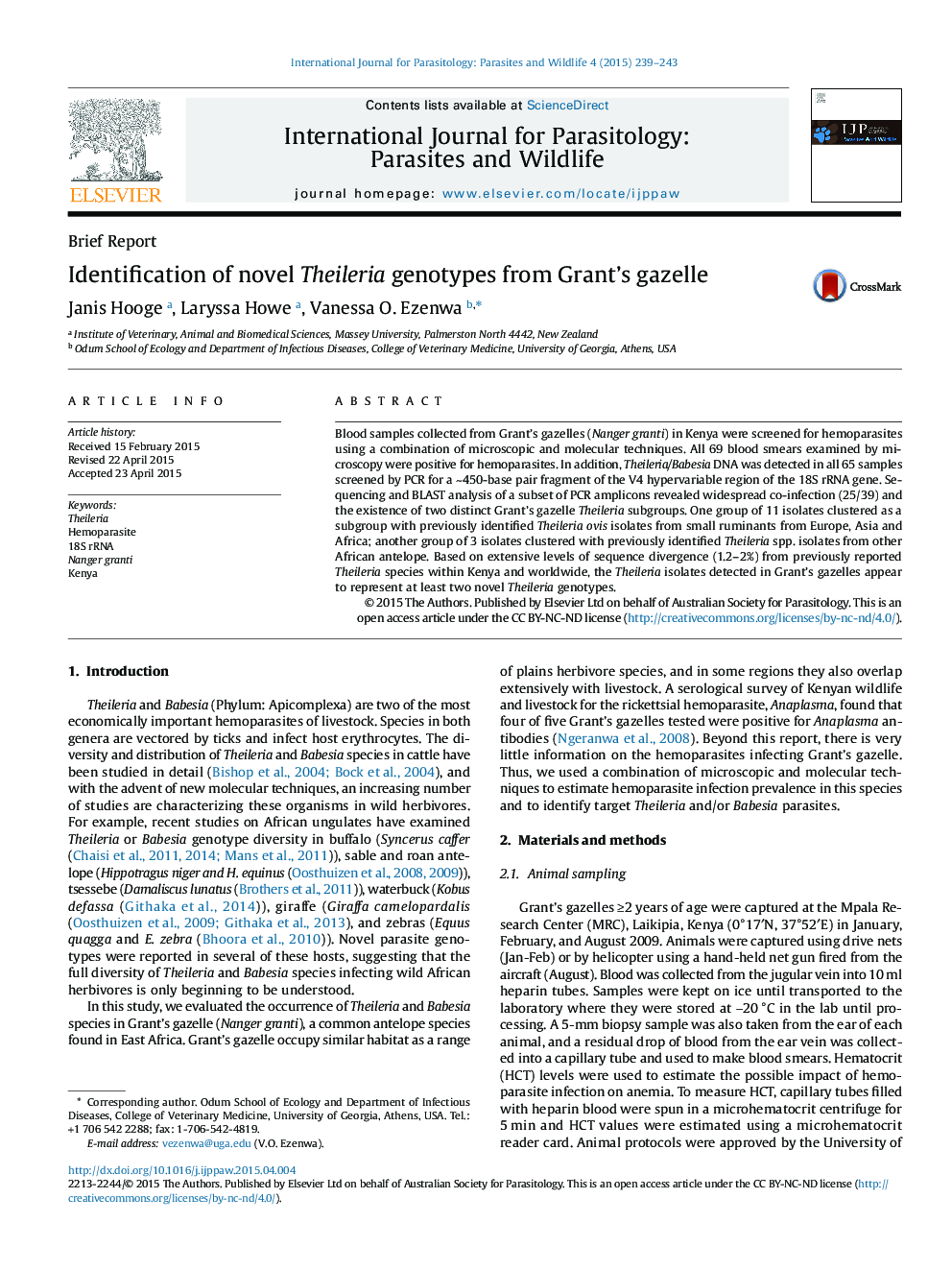| Article ID | Journal | Published Year | Pages | File Type |
|---|---|---|---|---|
| 2055261 | International Journal for Parasitology: Parasites and Wildlife | 2015 | 5 Pages |
•One hundred percent of 65 Grant's gazelle blood samples were PCR-positive for Thelieria/Babesia.•Sequencing of PCR amplicons revealed widespread Theileria co-infections.•Isolates from singly infected animals fell into two Theileria subgroups.•One of these subgroups clustered with Theileria ovis isolates from livestock.•The gazelle Theileria lineages represent novel genotypes.
Blood samples collected from Grant's gazelles (Nanger granti) in Kenya were screened for hemoparasites using a combination of microscopic and molecular techniques. All 69 blood smears examined by microscopy were positive for hemoparasites. In addition, Theileria/Babesia DNA was detected in all 65 samples screened by PCR for a ~450-base pair fragment of the V4 hypervariable region of the 18S rRNA gene. Sequencing and BLAST analysis of a subset of PCR amplicons revealed widespread co-infection (25/39) and the existence of two distinct Grant's gazelle Theileria subgroups. One group of 11 isolates clustered as a subgroup with previously identified Theileria ovis isolates from small ruminants from Europe, Asia and Africa; another group of 3 isolates clustered with previously identified Theileria spp. isolates from other African antelope. Based on extensive levels of sequence divergence (1.2–2%) from previously reported Theileria species within Kenya and worldwide, the Theileria isolates detected in Grant's gazelles appear to represent at least two novel Theileria genotypes.
Graphical AbstractFigure optionsDownload full-size imageDownload as PowerPoint slide
